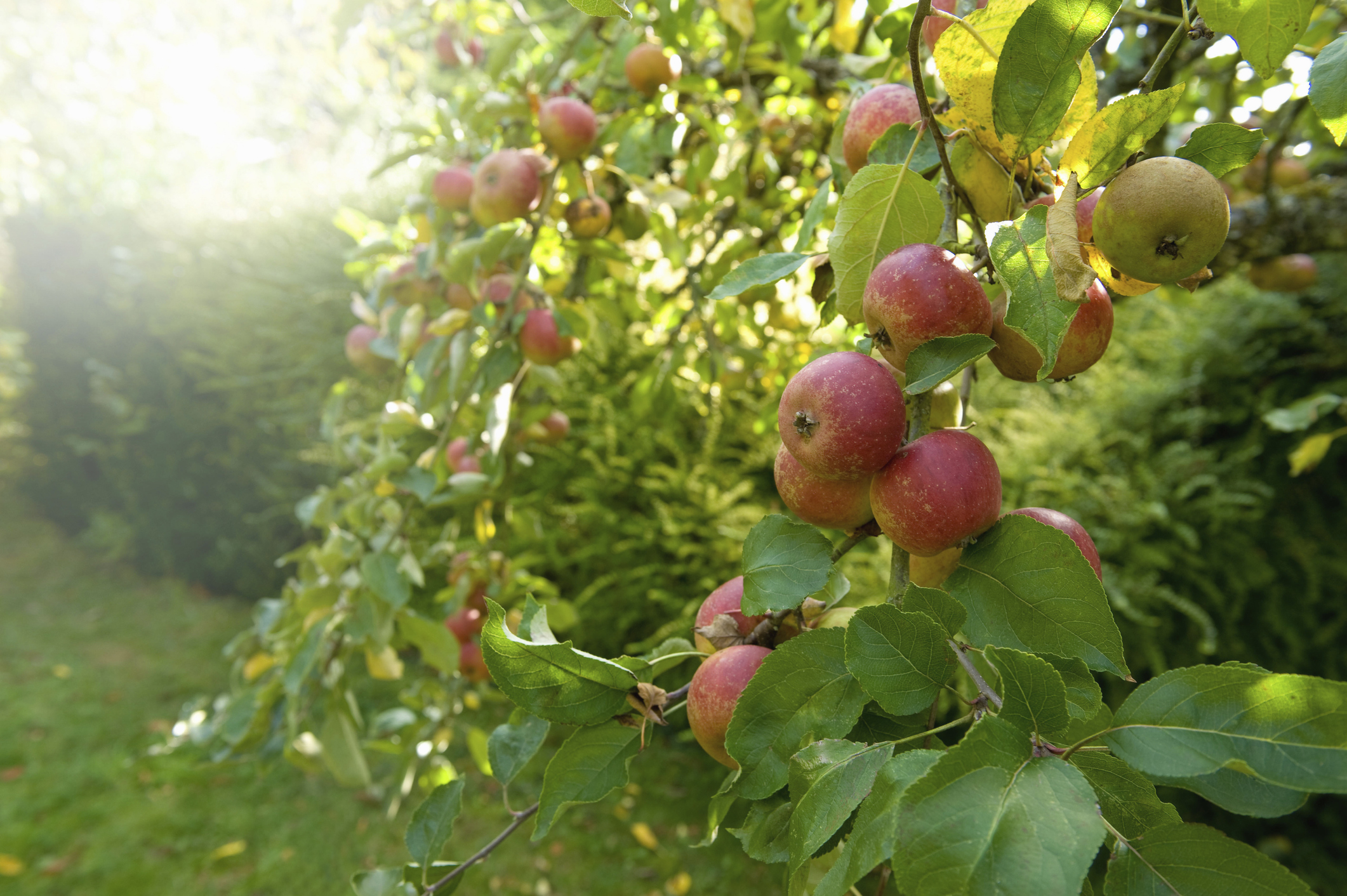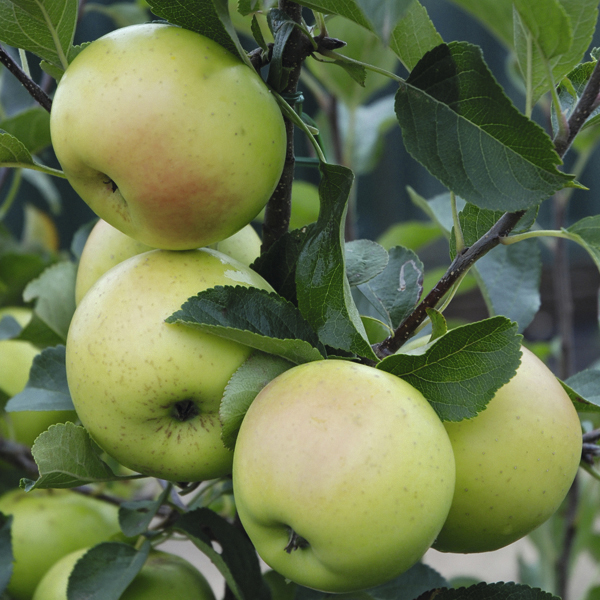
You need to know how to prune apple trees if you have one in your garden. Apple trees and bushes need proper care and correct pruning, as if they are not well maintained and are neglected, they will stop producing fruit.
Many people inherit old, existing freestanding apple trees in the garden when they buy a new home, but may have no idea how to look after them. Years of neglect can take its toll on these trees, but a good prune can help and even bring some back from the brink of death.
Follow the step-by-step advice below to ensure you have vigorous and productive trees bearing a healthy crop of fruit every year. And, when you're done, be sure to check out our garden ideas feature.
- Adding trees to your garden design? We have all the advice you need.
Why prune apple trees?
The aim of pruning freestanding apple trees is to:
- Remove any dead, diseased or damaged wood in order to keep the tree healthy and producing fruit
- Removing a bit of old wood each winter will stimulate new growth as it is the young wood – between 1 to 4 years old – that fruits best
- Create the basic structure to make it easier to maintain
- Create an open centre to the tree to ensure that enough sunlight is reaching the ripening fruits – without which they will not ripen fully
What is the best time of year to prune apple trees?
Prune your apple tree in winter when it is dormant, between November and early March, when the leaves are off the tree.
How to prune apple trees
Before you start, make sure that you have the correct equipment:
- A sharp pair of secateurs
- Folding pruning saw
- If you need to reach heights, a safe and sturdy ladder – and someone to hold it for you!
1. Start by pruning away any diseased and damaged branches.
2. Next, start to thin out the branches – selectively removing or shortening a branch here and there as you move around the tree. Focus pruning on areas where the growth seems more crowded. The aim is for an open, goblet-shaped canopy which opens up the crown to allow light in and air to move around freely.
3. Prune out upward growing interior branches, especially those that rub against each other or criss-cross other branches, and any leading branches that compete with each other.
4. Keep stopping to stand back and check your work and overall shape of the tree.
More from Period Living

Period Living is the UK's best-selling period homes magazine. Get inspiration, ideas and advice straight to your door every month with a subscription.
5. If your tree is in particularly bad shape and has been really neglected, don’t do all the work in one season. Spread the work out over 2 or 3 winters. Aim to take between 10–20% of the overall canopy off in any one winter, working around the tree evenly.
6. The more you prune, the stronger the regrowth on a healthy tree. Pruning too hard will result in vigorous straight stems sprouting from the main branches – known as watershoots. These can crowd the crown – meaning sunlight can't get to the fruit – so prune away these.
7. Remove any sprouts coming from the base of the trunk, known as suckers. They come from the rootstock rather than the fruiting tree grafted onto it.
8. Prune the outside branches of the tree – 'heading cuts' – to shorten and thicken them, especially in young trees (see below). It stops branches from getting long and gangly. To do this, cut away 20-30% of last year’s growth – look for the wrinkly ring of bark encircling each stem. Make the cut just above an outward-facing bud, which will stimulate growth and encourage branches to grow in that direction.
9. Fewer heading cuts are needed as the tree matures and can cause it to become overcrowded.
Pruning dos and don'ts
- Don’t leave little stubs. When you're making cuts make sure they’re clean and flush to the larger branch they grow from
- Don't prune too vigorously – see above for how much you should remove each year
- Do stagger your pruning cuts throughout the canopy for even regrowth. If you only prune the top branches, this is where all the new growth will shoot up from, leaving you with young, non-fruiting shoots
- Don't prune off limbs that are too large – even with very old trees, as these are at risk of decay. Think twice before cutting into branches that are more than 10–12cm in diameter. If you have to prune that branch, look for a narrower section further along to prune
- Don't make lots of small pruning cuts. Most of your pruning cuts will be to branches that are between 1–5cm. You should be looking to make 10–20 pruning cuts in total

Keep apple trees, such as Apple Greensleeves, well pruned and you will be rewarded with the fruits of your labour
How to prune younger apple trees
Follow this advice from Suttons on how to prune new apple bush trees to the best shape.
Probably the most widely seen style of apple is the bush, and when well grown it can be a highly productive method of apple growing.
- Once your new apple tree is planted, the central leader (main stem) should be removed at a point just above the highest side branch or feather. This will encourage the feathers to develop and the strongest and best placed ones should be selected as the main frame of the tree.
- Do not let the young tree fruit in the first year. Remove any fruit as soon as they are seen.
- Over the next three seasons, all that is needed is to cut these outside branches back by about one third in winter to encourage sub branch development and shorten and thicken these branches and stop them becoming too long and gangly.
- When, from year four, older sub branches are removed, make sure that the cut is made at a union with another as this will maintain a healthy productive branch structure.
- Aim to limit the height of the tree to around 2.4m. and expect your tree to be yielding up to 22kg of fruit once it reaches 5 years.
- The aim is to arrive at an open-centred tree with a maximum of six main branches which form the ‘backbone’ of the tree for life. Sub branches of these will bear most of the fruit and these are removed, allowing replacements to grow, as they reach about four years old.
- This will maintain the bulk of the tree in a ‘young’ state to ensure maximum productivity. Bush trees can be planted about 3–3.5m apart
More gardening advice:
- How to garden on a budget
- How to prune roses
- How to start organic gardening
- How to grow your own produce at home
Join our newsletter
Get small space home decor ideas, celeb inspiration, DIY tips and more, straight to your inbox!